Some groups of Americans value local news more than others: People over 50, black Americans, and Americans with a high school education or less are more likely than other groups to say that they follow local news “very closely,” and they prefer getting that news from TV rather than online, according to research Pew published on Wednesday. (This report builds on a larger local news report that Pew published earlier this year.)
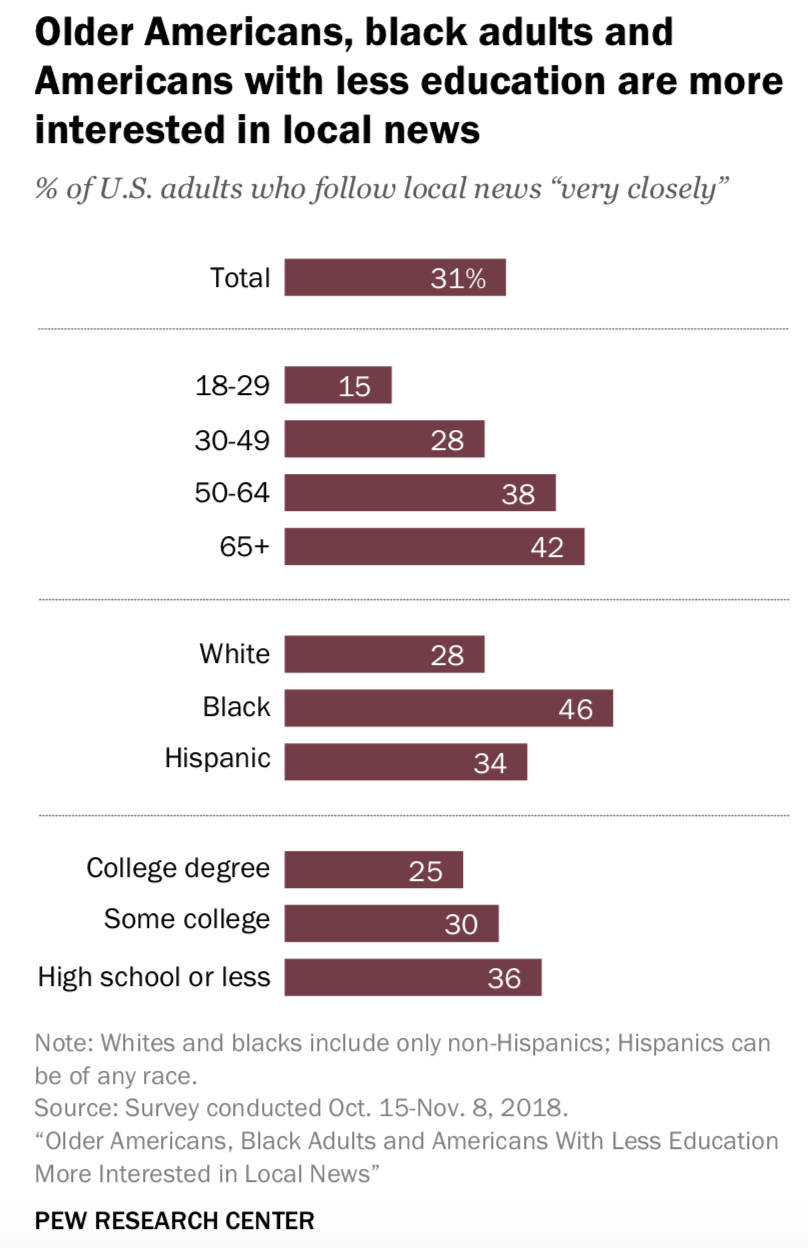
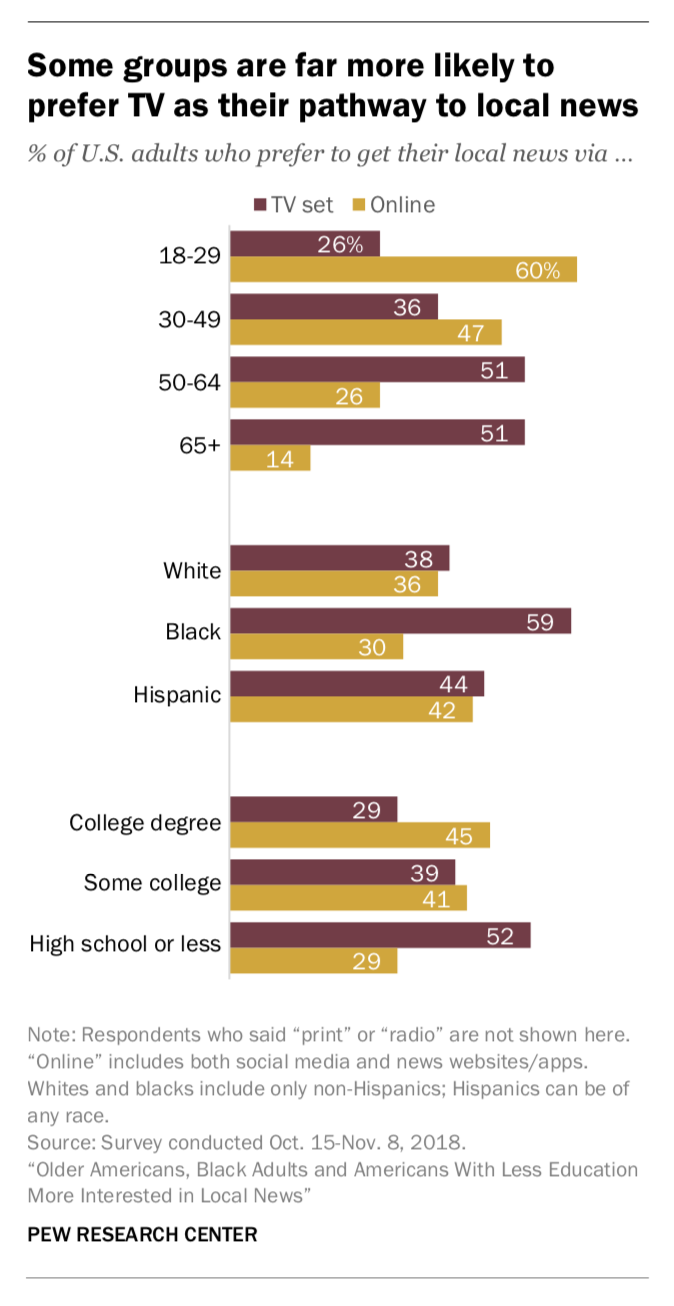
People under 50, meanwhile, are also less likely to pay for local news. To be clear, just 14 percent Americans of any age pay for it; most also believe that local news is doing well financially. But just 7 percent of 18- to 29-year-olds and 9 percent of 30- to 49-year-olds pay anything for local news (subscription, donation, or membership), compared to 29 percent of people over 65. The primary reason that 18- to 29-year-olds give for not paying for local news is that they aren’t interested in it.
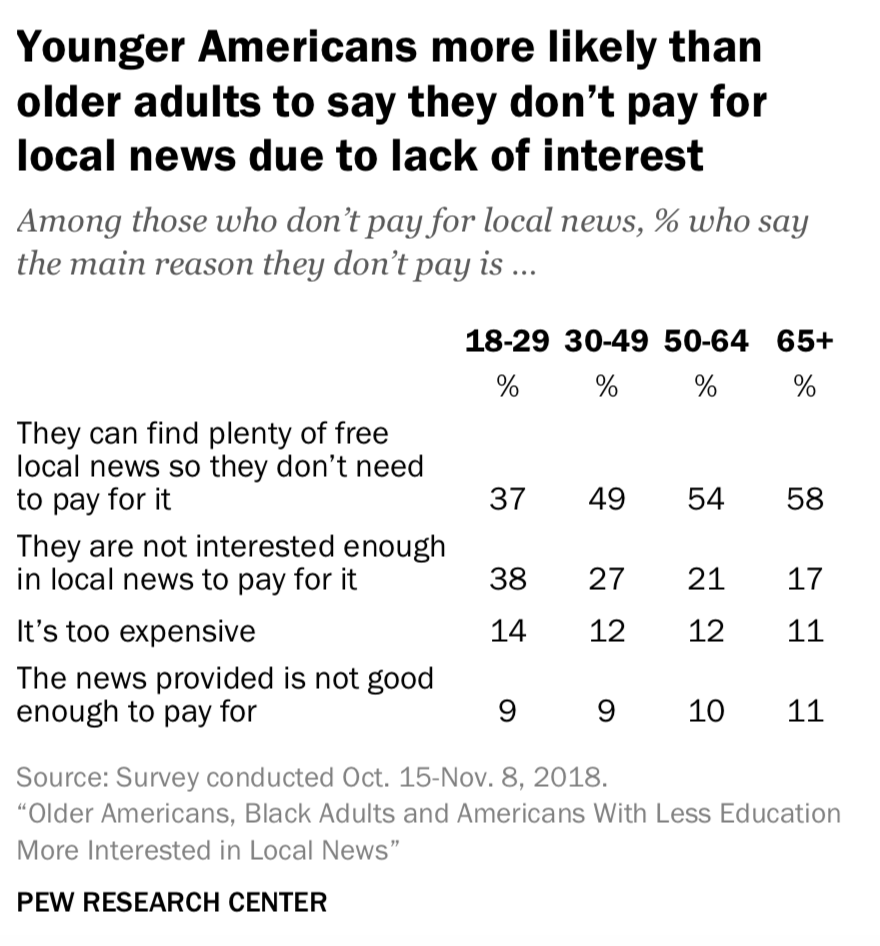
That isn’t necessarily surprising. Twentysomethings move a lot (though less than they used to) and are less likely than older people to own homes or have kids in local schools.
Meanwhile, Americans with a high school education or less are more likely to say they follow local news than groups with more education; they’re also more likely to follow local news than national news, while college-educated Americans say the opposite.
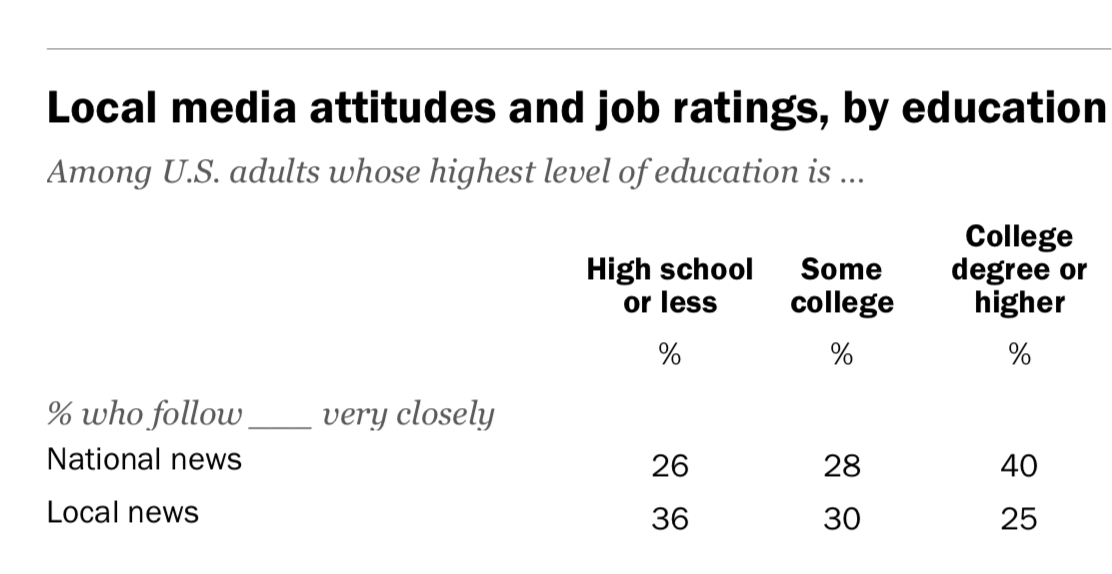
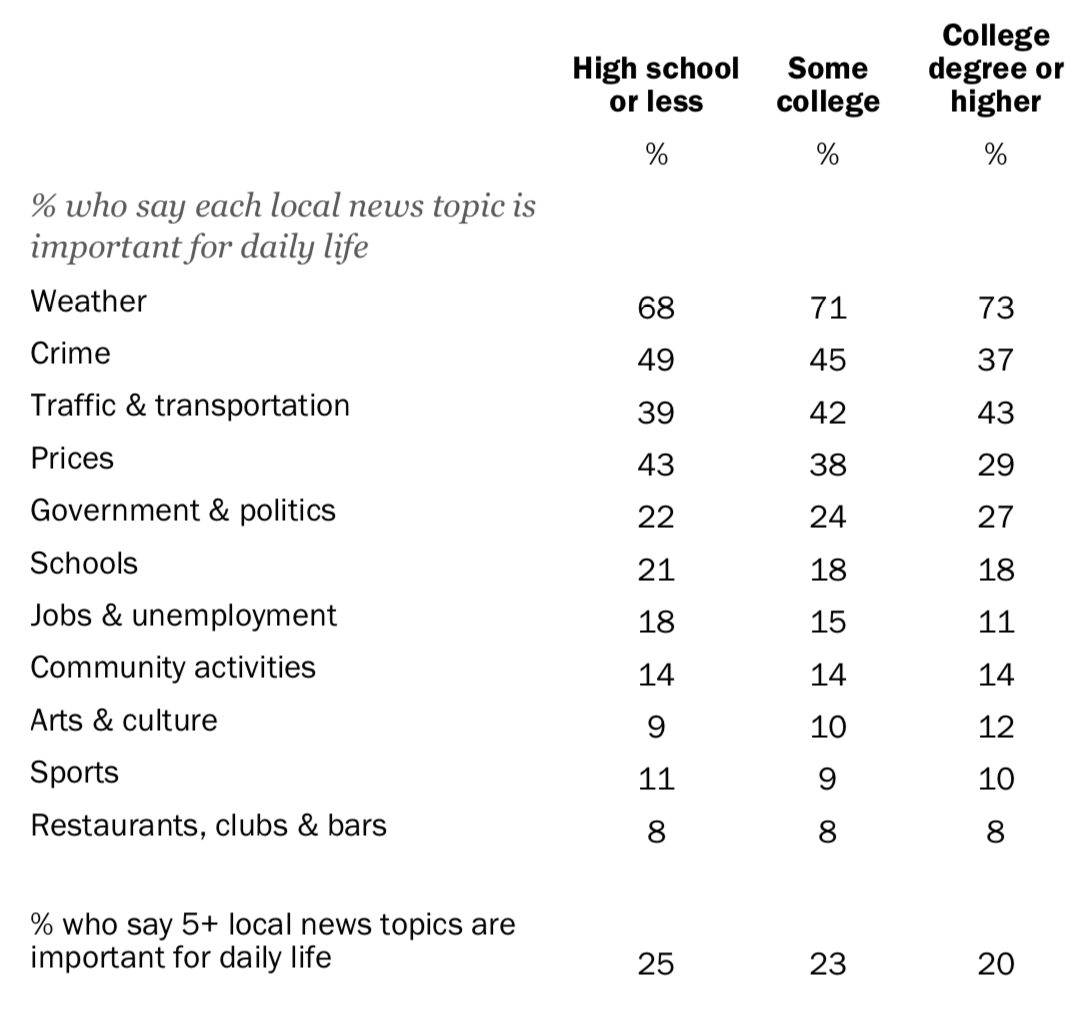
Since less-educated Americans are also more likely to be poor, the report calls to mind the “information pyramid,” a concept that a group of local journalists recently came up with to describe the hierarchy of journalism needs — and how local news organizations might switch their priorities.
“A huge amount of journalistic resources go into the top of the pyramid to serve the abstract needs of a comfortable few, completely passing over the basic information needs of a great many,” they wrote. “Journalists routinely cover inequity as an abstract phenomenon that can be observed and remarked upon from afar, but it’s a rare media organization that would produce a guide for navigating rural poverty, or managing an opioid addiction, or handling your lease when you’re getting gentrified out of your neighborhood.”
Pew’s full report is here.
Leave a comment